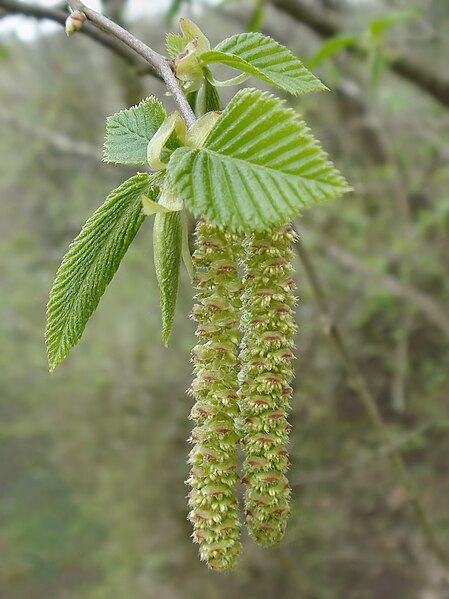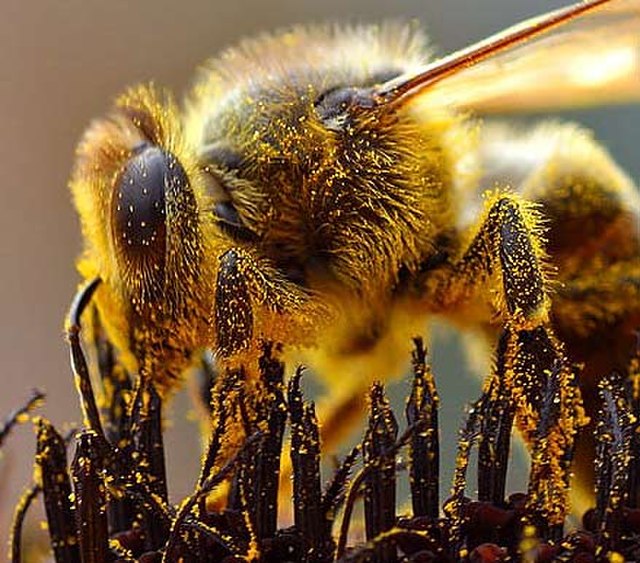A catkin or ament is a slim, cylindrical flower cluster, with inconspicuous or no petals, usually wind-pollinated (anemophilous) but sometimes insect-pollinated. They contain many, usually unisexual flowers, arranged closely along a central stem that is often drooping. They are found in many plant families, including Betulaceae, Fagaceae, Moraceae, and Salicaceae.
Detail of a male flowering catkin on a willow (Salix sp.)
Etymology illustrated by pussy willow catkins from a children's book
Male catkins of hop-hornbeam (Ostrya carpinifolia)
Young male catkins of hazel (Corylus avellana)
A flower, also known as a bloom or blossom, is the reproductive structure found in flowering plants. Flowers consist of a combination of vegetative organs – sepals that enclose and protect the developing flower, petals that attract pollinators, and reproductive organs that produce gametophytes, which in flowering plants produce gametes. The male gametophytes, which produce sperm, are enclosed within pollen grains produced in the anthers. The female gametophytes are contained within the ovules produced in the carpels.
Reproductive parts of Easter Lily (Lilium longiflorum). 1. Stigma, 2. Style, 3. Stamens, 4. Filament, 5. Petal
The calla lily is not a single flower. It is actually an inflorescence of tiny flowers pressed together on a central stalk that is surrounded by a large petal-like bract.
Grains of pollen sticking to this bee will be transferred to the next flower it visits.
Ophrys apifera, a bee orchid, which has evolved over many generations to mimic a female bee.








